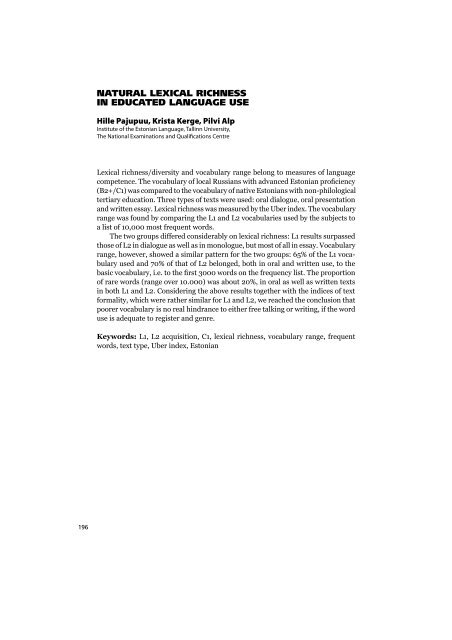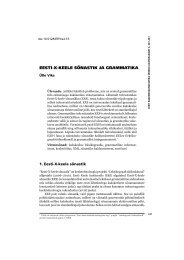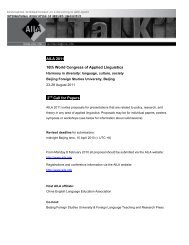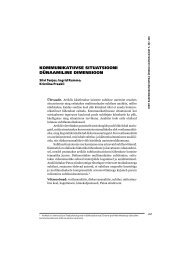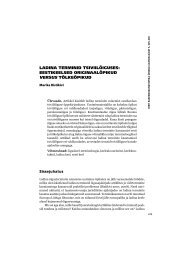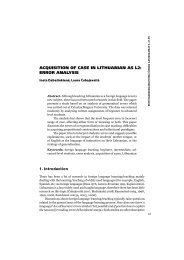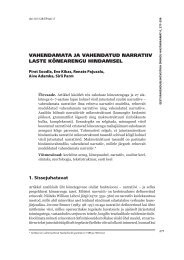View - Eesti Rakenduslingvistika Ãhing
View - Eesti Rakenduslingvistika Ãhing
View - Eesti Rakenduslingvistika Ãhing
Create successful ePaper yourself
Turn your PDF publications into a flip-book with our unique Google optimized e-Paper software.
NATURAL LEXICAL RICHNESSIN EDUCATED LANGUAGE USEHille Pajupuu, Krista Kerge, Pilvi AlpInstitute of the Estonian Language, Tallinn University,The National Examinations and Qualifications CentreLexical richness/diversity and vocabulary range belong to measures of languagecompetence. The vocabulary of local Russians with advanced Estonian prociency(B2+/C1) was compared to the vocabulary of native Estonians with non-philologicaltertiary education. Three types of texts were used: oral dialogue, oral presentationand written essay. Lexical richness was measured by the Uber index. The vocabularyrange was found by comparing the L1 and L2 vocabularies used by the subjects toa list of 10,000 most frequent words.The two groups differed considerably on lexical richness: L1 results surpassedthose of L2 in dialogue as well as in monologue, but most of all in essay. Vocabularyrange, however, showed a similar pattern for the two groups: 65% of the L1 vocabularyused and 70% of that of L2 belonged, both in oral and written use, to thebasic vocabulary, i.e. to the rst 3000 words on the frequency list. The proportionof rare words (range over 10.000) was about 20%, in oral as well as written textsin both L1 and L2. Considering the above results together with the indices of textformality, which were rather similar for L1 and L2, we reached the conclusion thatpoorer vocabulary is no real hindrance to either free talking or writing, if the worduse is adequate to register and genre.Keywords: L1, L2 acquisition, C1, lexical richness, vocabulary range, frequentwords, text type, Uber index, Estonian196


